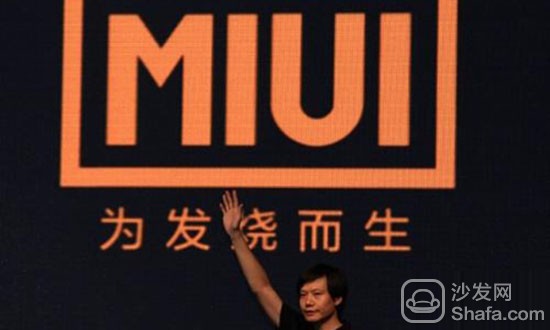But for its opponents, it should feel a burst of chill - whether it is South Korea's Samsung, or China's domestic rival Huawei. There is no mention of apples here. One of these two prices is still a step away from Apple's lowest-profile product. And again, Apple never seems to have over-emphasized Xiaomi's aggressive behavior. Otherwise, it still doesn't show any decent results. The corresponding action?

Millet
Yin Sheng believes that Xiaomi’s move means at least 4: 1. Absolutely no Chinese domestic rivals are allowed to form brand value in the mid-to-high end. For example, Huawei has achieved initial success in mid-to-high-end operations in the past year, and strategic intentions for establishing tidal front positions in this segment have also been made public, once formed. In the climate, Huawei can use the relative high profits of the market to subsidize future offensives at the low end and form a long-term offensive and defensive trend.
2. For Samsung, Xiaomi's offensive toward mid-to-high end means that it either responds or responds with further low-end offensives. It either reinforces the mid-to-high end and pulls away from the low end (at least, distractions). It's what Millet wants.
3. Xiaomi needs high-end users to increase the average value of a single user. Xiaomi has always wanted investors to view it as an Internet company, and one of the most common indicators of Internet company valuation is user value. At present, Apple's single-user value is about 900 US dollars, Yin Sheng in another article had that Xiaomi's single-user value is about 300 US dollars (corresponding to the average selling price of the two companies), if it wants to continue to increase single-user value , increase the average selling price of the product is the most direct way.
4. The key to Xiaomi’s entire business model is that users must have strong reliance on their products, otherwise their value will be greatly devalued, and the dependence may ultimately come from exclusive services on the Xiaomi platform, but before the exclusive services on the platform form a climate , It needs other sources of differentiation, and adding a bit of high-end brand impression is the best source at present. Otherwise, once the low-end products are brought into product due to competition and other factors, and the service is still young, the entire business logic may be Stuck shell.
To sum up, Xiaomi entered the mid-to-high end and defended his position on the offensive side at the mid-to-low end. However, for domestic rivals such as Huawei, the opportunity window may close after the end of 2015:
Once Xiaomi users reach a certain scale, it will be able to form a sales income subsidy product sales trend. My basis is: If the data released by Xiaomi is reliable, as of the end of 2014, Xiaomi sold a total of approximately 87 million mobile phones. If Xiaomi can increase users by another 100 million yuan by 2015, it will count the When a user is authorized by a third party to be used by MIUI, then its independent users are expected to approach two billion.
If the data is reliable, Xiaomi’s revenue generated through application distribution in 2014 is estimated to exceed RMB 1 billion. If Xiaomi can double the distribution revenue of each user in 2015 (as Xiaomi’s ecological chain grows, this is possible), Then, in 2015, it will be expected to bring in distribution revenue of nearly 5 billion yuan, accounting for about 5% of annual millet income.
The 5% estimate is an optimistic net profit level between Xiaomi and Chinese local competitors. Then, if Xiaomi is willing, it can almost completely sacrifice the profit on the mobile phone and subsidize it through service revenue so that it will not be able to In the event of a loss, almost all local competitors were forced into a loss-competitive situation. At that time, the initiative will be entirely in the hands of Xiaomi.
This will also put Samsung in a very difficult choice: If it is dragged down by not wanting to make a profit, it will have to abandon the low-end market. It also needs to calculate an account, whether it is part of the millet industry chain (through sales of parts) or whether it will kill millet—even at the expense of spare parts. So far, it hasn't been seen as a bit like an Internet company, which is very likely to make it miss the opportunity to transform the scale advantage of the product into the platform's scale advantage.
Of course, the premise of all this is that Xiaomi can continue to grow its sales of smart phones in China, and still maintain sales growth of more than 60% through overseas expansion. I still believe that Huawei has more opportunities in the international market - or Samsung. Accelerate defeat, leaving more room. At the same time, Samsung, Google, and companies that have already largely abandoned the mobile phone business, but hold key patents, may become spoilers.
In addition, if Huawei's layout in the chip and other industrial chain can be scaled as soon as possible, it will win some time for it, but fundamentally, it must still face Millet's ecosystem model - it will eventually change the mobile phone product. Pricing benchmarks.
Recommended installation sofa butler, download address: http://app.shafa.com/

